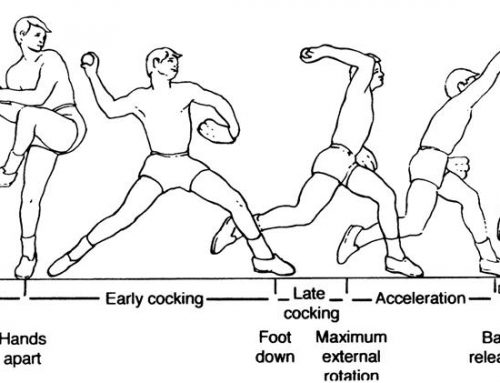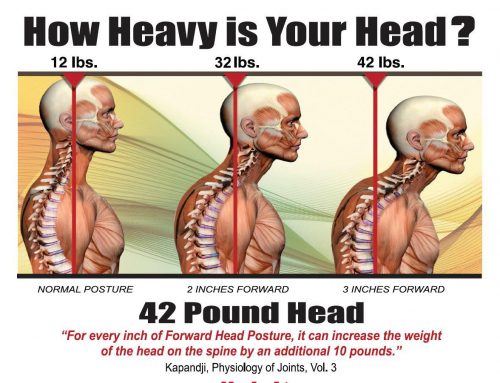The squat is one of the most used Primal Patterns® movements and yet is most poorly performed by people. Since we have progressed to sitting on chairs, driving and spending endless hours seated we have actually regressed in our range of motion.
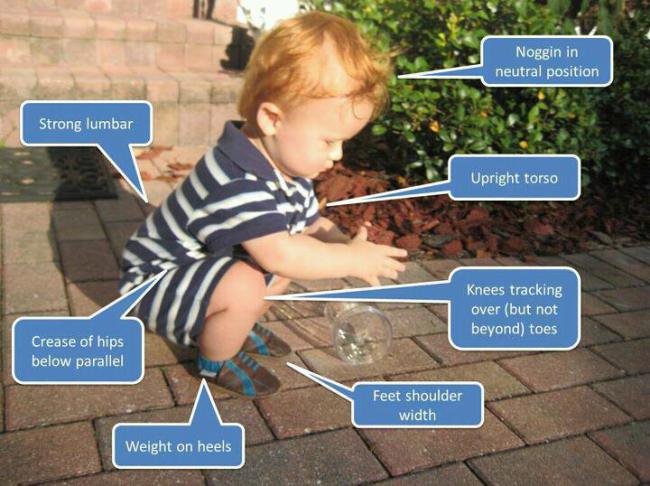
Every day we put our body through single and double legged squats as we perform our daily life functions and activities. Yet clients are still hesitant and sometimes insistent that they don’t want to squat, yet they have just got out of the car doing that very squat pattern that we are about to break down. It does not have to be fancy and use extensive gym apparatus, it can be simple.
In our classes you will see two types of squat, the Asian toilet squat and a primal squat. The Asian toilet squat is what i have experienced in India as a child and from my back packing days around South East Asia. Not my favourite but now I understand the benefits.

Here’s what the medical experts at Wikipedia have to say about the benefits if using this squat:
- Squatting might help to build the required exhaust pressure more comfortably and quickly.
- Squatting makes elimination faster, easier and more complete.
- For pregnant women, squatting avoids pressure on the uterus when using the toilet. Daily squatting helps prepare the mother-to-be for a more natural delivery.
- Squatting may reduce the occurrence or severity of haemorrhoids and possibly other colorectal disorders such as diverticulosis and appendicitis.
 In many gyms you will find a variety of squat type machines like smith machines and even footwork using the pilates reformer. The plain and simple answer is that there is no replacement for doing a free squat. Read my article on bone shape and its effects on squatting here
In many gyms you will find a variety of squat type machines like smith machines and even footwork using the pilates reformer. The plain and simple answer is that there is no replacement for doing a free squat. Read my article on bone shape and its effects on squatting here
How to squat
1. Stand with feet a little wider than shoulder-width apart, hips stacked over knees, and knees over ankles, feet turned out 30 degrees.
2. Inhale and draw the belly towards the spine for better stabilisation. Note: Allowing the back to round (like a turtle’s shell) will cause unnecessary stress on the lower back. It’s important to maintain a neutral spine throughout the movement.
3. Keep your eyes level with the horizon and the chest lifted, the lower back should be in a normal lumbar lordosis throughout for shock absorption. The diagram to the right shows good and poor form with the angles of the body.

4. Initiate the movement by inhaling and unlocking the knees first then follow with the hips, slightly bringing them back. Keep sending hips backward as the knees begin to bend. If you initiate with the hips there will be a tendency to bring the chest forward.
5. While the butt starts to stick out, make sure the chest and shoulders stay upright, and the back stays straight. Keep the head facing forward with eyes straight ahead for a neutral spine. Track the knees in line with the second toe.
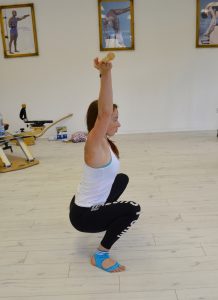
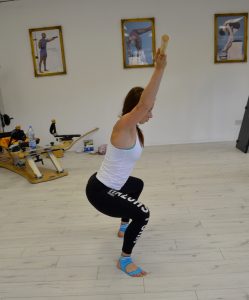
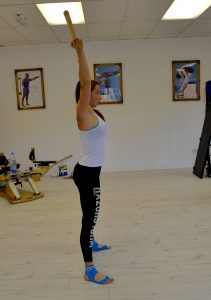
6. The best squats are the deepest ones your mobility allows. Optimal squat depth would be your hips sinking below the knees (again, if you have the flexibility to do so comfortably). Pro tip: Squatting onto a box until the butt gently taps it will be a reminder to squat low. Athlete Marketa Manhart demonstrates good and bad form above.
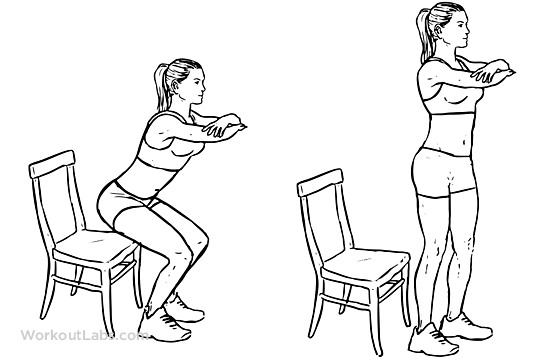
7. Engage core and, with bodyweight in the heels, explode back up to standing, driving through heels. Imagine the feet are spreading the floor (left foot to the left, right foot to the right) without actually moving the feet.
If your femur heads are slightly medially rotated or you have femoral impingement (FAI) this causes abnormal contact with the anterior superior aspect of the acetabulum in activities requiring a larger range of motion. A medical study took 32 volunteers, 16 with FAI and 16 matched with age and gender. The results were patients with FAI had no differences in hip motion during squatting but had decreased sagittal pelvic range of motion compared to the control group (14.7 ± 8.4° versus 24.2 ± 6.8°, respectively). The FAI group also could not squat as low as the control group (41.5 ± 12.5% versus 32.3 ± 6.8% of leg length, respectively), indicating the maximal depth squat may be useful as a diagnostic exercise. Limited sagittal pelvic ROM in FAI patients may contribute to their decreased squatting depth, and could represent a factor amongst others in the pathomechanics of FAI. 1
Chek practitioner Terence Thomas gives us three top tips for helping our squat pattern.
CHEK practitioner Nisha Srivastava combines infant development and the squat.
Death begins in the colon
According to Dr.Vanita Forsyth chiropractor and authority on the colon, 90% of all diseases in the body are credited to having origins in the colon.We are not what you eat but what we do not eliminate. If the waste from the foods we eat aren’t eliminated within 18-24 hours, they can build up on the walls of the colon. This can lead to autointoxication which can be a cause for low energy, headaches, weight gain, allergies, acne and more. Fiber is important in our diet to help speed the transit time and keep the colon clean. When adequate fiber is added to our diet, certain conditions can be greatly reduced. These include appendicitis, diverticulits, hiatal hernia, high blood pressure, high cholesterol. varicose veins, cancer of the colon, diabetes, myocardial infarction, rheumatoid arthritis, obesity, gallstones, kidney stones, and hemorrhoids. In conclusion this is all the more reason to do the squat particarlary when eliminating body waste.
Bibliography
Exercise coach – Paul Chek
The effect of cam FAI on hip and pelvic motion during maximum squat – http://link.springer.com/article/10.1007/s11999-008-0620-x#page-2
1- http://link.springer.com/article/10.1007/s11999-008-0620-x#page-1



